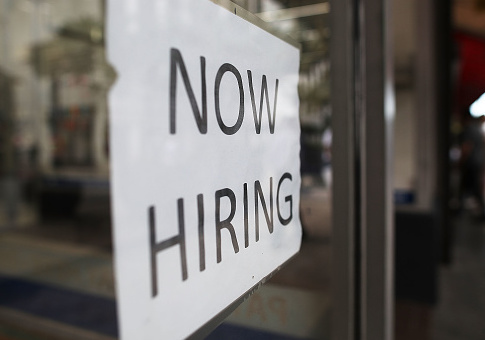The number of Americans either working or looking for work in the past month hit a record high of 160,201,000, according to numbers released by the Bureau of Labor Statistics.
There were 145,000 more Americans who joined the labor force in March, while 23,000 left. The number of Americans not participating in the labor force increased slightly from 94,190,000 in February to 94,213,000 in March. The bureau counts those not in the labor force as people who do not have a job and did not actively seek one in the past four weeks.
The labor force participation rate, which is the percentage of the population that has a job or actively looked for one in the past month, remained steady at 63 percent in March.
In addition to more individuals joining the labor force this month, the number of unemployed individuals declined by 326,000 Americans, leading to a decline in the unemployment rate.
The unemployment rate for all Americans declined from 4.7 percent in February to 4.5 percent in March. The unemployment rate has not been this low since May of 2007, nearly a decade ago.
This measure does not account for those individuals who have dropped out of the labor force—it simply measures the percent of those who did not have a job but actively sought one over the month.
The "real" unemployment rate, otherwise known as the U-6 measure, was 9.2 percent in February, which dropped to 8.9 percent in March.
There were 5,553,000 Americans working part-time in March who would rather have a full-time job but cited economic reasons for not having such employment. This number declined by 151,000 over the month.
According to the bureau, involuntary part-time workers are "persons who indicated that they would like to work full time but were working part time (1 to 34 hours) because of an economic reason, such as their hours were cut back or they were unable to find full-time jobs."
Overall, total nonfarm payroll employment increased by 98,000 in March.
"The current labor market is one of the tightest I have seen in the 43-year history of NFIB's survey," said Bill Dunkelberg, chief economist at the National Federation of Independent Business. "The scarcity of qualified applicants continues to frustrate small business. They often have to compete with larger corporations which have more resources to attract employees."
"Just like we saw in 2007, more owners are increasing compensation to attract and retain good employees," Dunkelberg said. "The March reading was strong. However, owners are still struggling to fill open positions."
"Congress had a chance to repeal $1 trillion in taxes and most of the Obamacare mandates that are crushing small businesses," said Juanita Duggan, president at the National Federation of Independent Business. "Our research over the next few months will show whether small business optimism is fading as a result of Congress' failure to repeal Obamacare."
